Indian eCommerce is growing in leaps and bounds. Online shopping portals like Amazon, Flipkart, Snapdeal, Shopclues, Jabong, and PayTM Mall have revolutionized the way Indians shop online. Flipkart has been the flag bearer of this Indian eCommerce story and has come a long way, enticing users from all over the country. So as a seller, being a part of Flipkart is nothing less than a prestigious entrepreneur. Selling on this Walmart owned platform can be a full-time business or can act as a support income to any family’s primary earner. The below-stated step by step guide is on how to sell products on Flipkart, would immensely help those individuals who want to showcase their products to the online shopping customers.
Why sell on Flipkart?
Flipkart started in 2007 as an online book reseller with nationwide shipping. Flipkart later expanded its categories to apparels, electronics, lifestyle goods, groceries, and others. As per the 2019 report, over 100 million registered users shop on Flipkart, thereby making it an attractive proposition to the sellers, who can easily reach out to such a vast customer base. There are benefits of selling on Flipkart.
To get a better idea of what sells best on Flipkart, you can browse the portal and scroll down at the bottom of the page, where they list MOST SEARCHED FOR ON FLIPKART – which is segregated across categories with leading brands in them. Top selling products on Flipkart along with highest selling products on Flipkart can also be viewed here.
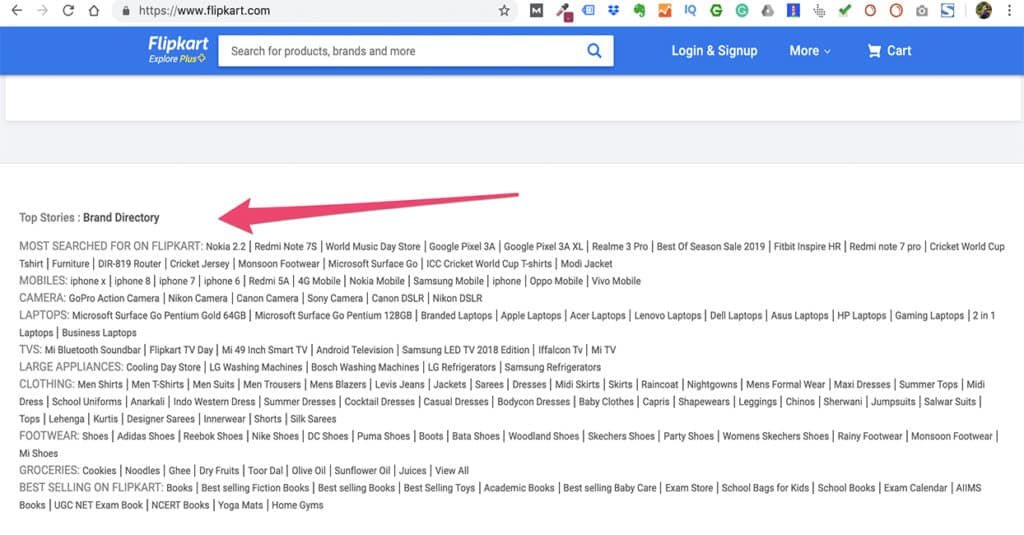
As a new business on Flipkart follows these simple step by step guide to creating a Seller Account. Visit the link https://seller.Flipkart.com/index.html#signUp/accountCreation/new and provide your email id, mobile number, full name and password, before you hit the “Sign Up” button.
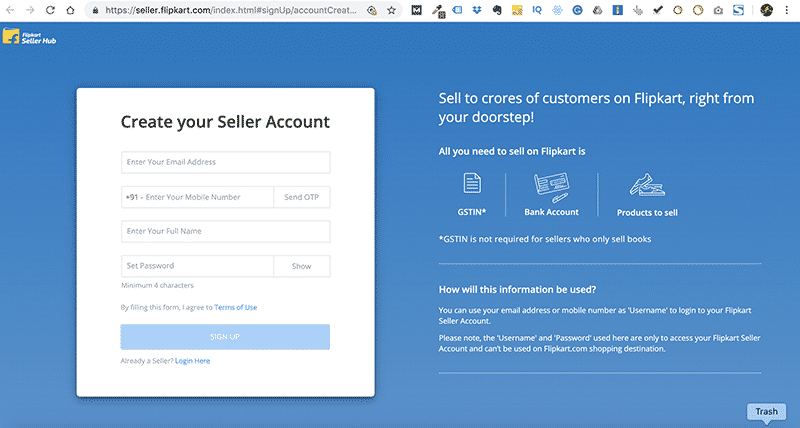
Next, you will be asked to furnish your PIN code, from where the products would be picked up. Once the PIN code is verified you have to punch in the detailed address.
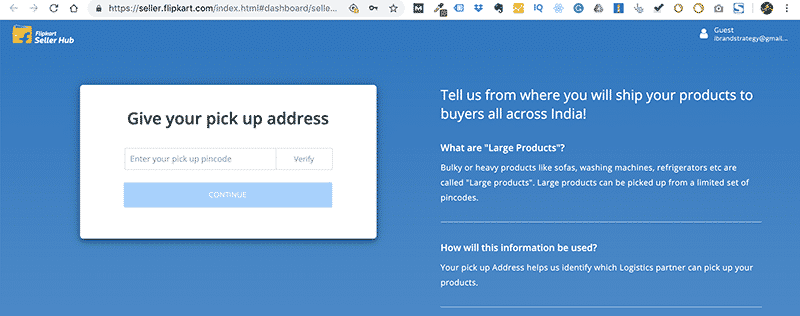
Once the PIN code is verified, you have to punch in the details like complete address, GSTIN, etc. However, you also have the option of only selling categories that are GSTIN exempted, such as books which one can sell on Flipkart without GST.
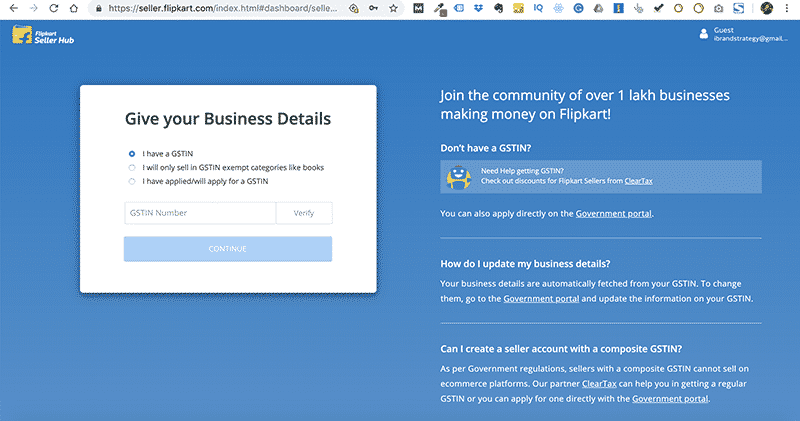
Next, you have to provide your bank details which are associated with your business. In case you have applied for the same and the details are awaited, you can choose that option and proceed accordingly.
On providing all the requisite details, the seller dashboard will appear and you will get to see which all details are pending at your end that needs to be uploaded before you start selling on Flipkart. You have to put up a Store descriptor and business entity name, which will then be displayed to the online buyers of your product.
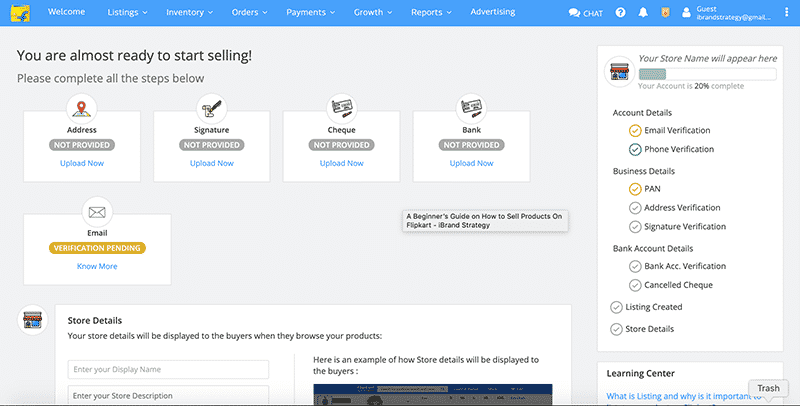
Listing your Products on Flipkart:
The seller dashboard is straightforward to use and listing your products is just a matter of a few clicks. Open the link https://seller.flipkart.com/ and login with your email id and password. Go to the Listing section on the top left corner of your browser. On clicking ‘Listings’ in the menu as shown in the image below, a listings dashboard will appear within the sellers dashboard.
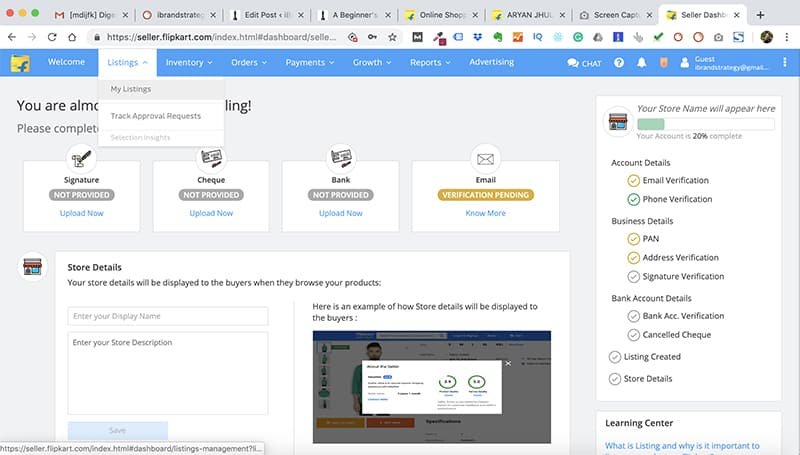
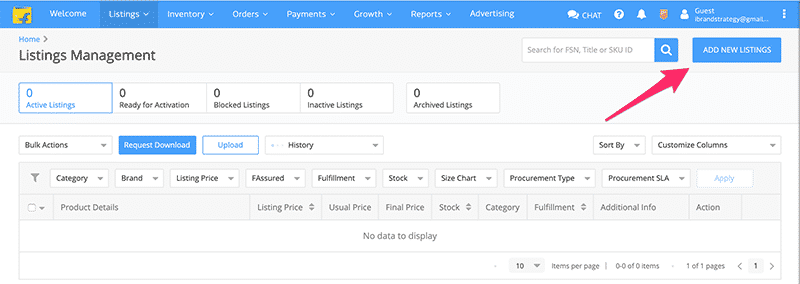
On clicking add “New listing” you will be taken to adding “Single Listing” or “Add Bulk Listing“.
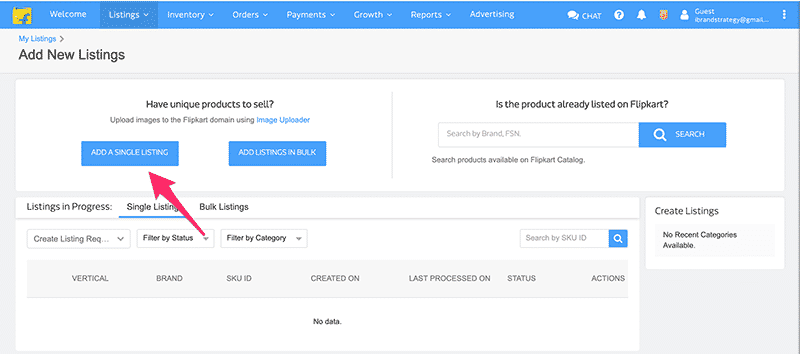
On Clicking “Add a Single Listing,” you get a list of categories. By selecting a particular category, it further breaks down into several sub-categories from which you can choose. When you select the sub-category, it would ask to upload the photo of the same and then is submitted for a QC check by Flipkart’s backend team. On approval, the product you intend to sell would appear under “My Listing.”
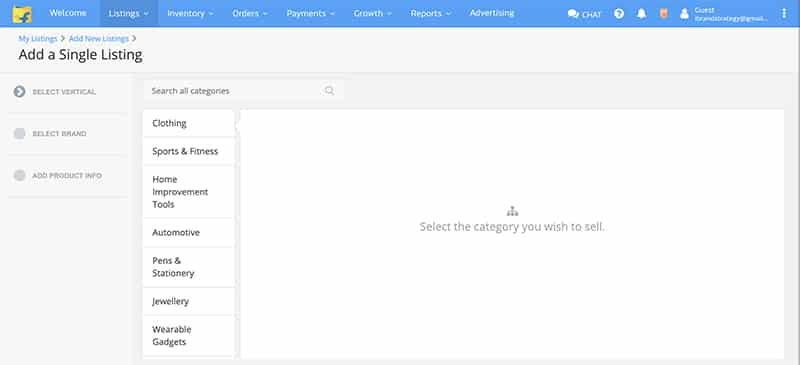
What is the right price to sell?
As a Seller, pricing your product is your sole discretion. However, make sure you can negotiate a good deal with your suppliers so that your prices can be competitive and not way off than other sellers. If you sell something that’s unique and is of high demand, then obviously you can charge a premium. A bit of research needs to be done to understand the price range offered by other sellers in the same category you would operate.
Make sure you are aware of all the fees that are charged by Flipkart on the product you sell. That would help to price your product right without any ambiguity. A commission is billed as a percentage of order item value which depends on the category. Shipping fee is charged alongside, which is based on the weight of the product and shipping location. Based on the customer’s payment mode (NEFT, Cash on delivery, digital wallet, credit/debit card, etc.), a collection fee is also charged to a seller. A slab wise fixed fee is also charged, which depends on the order item value.
Illustration of Flipkart selling fees calculator:
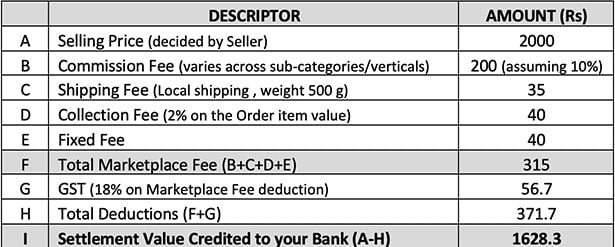
How to achieve Success on Flipkart?
Remember some essential tips to succeed in Flipkart and boost your sales and gain high profitability. Following the norms of Flipkart selling policy also helps.
1. Invest in Product Listing Ads
By putting up advertisements for products, a seller can achieve impressive sales figure. Attracting more visitors to your product pages increases your chances of getting sales. For product listing advertisements, pick one of your products, and create a campaign for it. Flipkart, in turn, shows it as one of the Featured Products in various relevant pages. With an active campaign for your products, customers can click on the ads and proceed to buy the items. This initiative would increase your revenue on Flipkart.
2. Participate in Spike Sales
Flipkart has some exclusive shopping events known as Spike Sales. During this period, it provides offers on most of its product category, which attracts a considerable number of buyers and creates immense traffic on Flipkart. They even run TV commercials during these shopping events. By participating in these sales event, you can experience more success than regular days.
3. Maintain well-stocked Inventory
Just like any brick and mortar store, maintaining Inventory is key to any eCommerce enterprises. Make sure that you have a considerable variety of products to fulfill the orders placed by your customers faster. Having a healthy stock can also help address the demand generated during the spike sales and other Flipkart shopping festivals.
What documents are required for a seller on Flipkart?
Before registering as a Seller on Flipkart’s platform, you should keep certain documents ready for a seamless registration. Type of reports required varies with the kind of business you run as a seller.
1. For a sole proprietorship or individual Seller, the following documents are a must
• PAN Card
• GST Registration Certificate
• Bank Account Statement
• Signed declaration stating the ownership of the business
2. For a private limited company, one needs to have the following
• Company PAN
• GST Registration Certificate
• Private limited company establishment certificate
• Articles of Association and Memorandum
• Business Address and identity proof
3. For partnership firm or LLP firm, make sure to have these ready documents
• Partnership deed or LLP established the certificate
• Address proof document – electric bill/telephone bill
• LLP PAN
• Partner document who holds the power of attorney
What is the minimum product requirement to sell on Flipkart?
Flipkart’s platform to sell products is user-friendly. Once all the required documents have been verified, and the seller profile is found to be complete, one can start listing their products and start selling. However, one needs to have a minimum of 1 listing created for unique products to initiate selling on Flipkart. Though there are no such quantity limitations on Flipkart, one can list at least five quantities of each product for a better understanding of sales. When a customer buys your product, Flipkart charges a percentage of commission from the item price, along with collection fees and shipping charges.
Which are the highest selling products on Flipkart and Amazon?
As per Google’s compiled data on consumers’ search process, and the online products creating maximum traction, the products that sell most on Flipkart and Amazon are as below.
Apparel and accessories sell the most with an impressive figure of 84%, followed by Electronics at 71%. Beauty and Personal Care products are in the third position, with a 64% share. Books (62%) and Household products (61%) remain below the list. Hence, as a seller dealing with these product categories are more profitable and would fetch many repeat purchases.
What are the pros and cons of being a Flipkart Seller?
As a seller one might be wondering about the advantages and disadvantages countered while remaining active on the eCommerce portals. Often a starter might pose this question too and hence need to analyze the same.
Advantages of being a Flipkart Seller:
1) Wide Footprint: With over 100 million registered Flipkart users, one can get the assurance of extensive viewership across geography, which could have been an impossible task for any standalone website.
2) Brand Building: When more and more customers put in their positive reviews for your products, automatically your product comes up the search pages and therefore, the brand creates enormous trust in consumers’ mind. There are several kitchen appliance brands which did not exist five years back but are household names now because of the exposure they received in Flipkart. Not to mention, the brand will resonate the high quality offered in the product.
3) Advertising Support: As a seller, if you want to feature your product on Flipkart, you can buy banner ads, push your products higher up with a “Sponsored” tag, offer a higher marketing budget so that the product managers take care of your product’s sale. Through these promotional initiatives, you can receive good deals even if you are a comparatively new seller.
Disadvantages of being a Flipkart Seller:
1) Price war: Since Flipkart often runs various offers with a discounted price, as a seller, your margin decrease to offer your products in sync with the marketplace’s sales.
2) Tackling Returns: Returns is something one needs to battle with while operating on Flipkart. Damaged product in transit also is challenging to handle. At times the Seller had to take the hit to retain customers.
3) Product focus: the concept of product focus means running after a large sales volume on the platform and less emphasis on Seller’s margin and profit.
4) Lack of Direct promotion: As a seller, you can’t do SEO/SEM for your brand or product, since you don’t have direct control over the pages where your products are listed or displayed.
Submit your review | |







That was an amazing article about flipkart